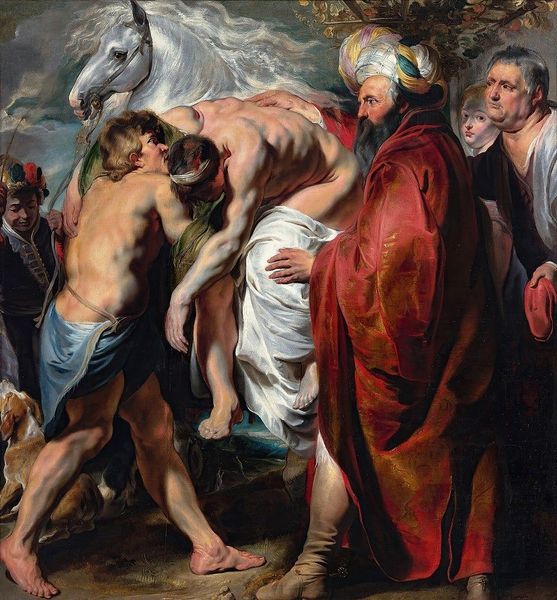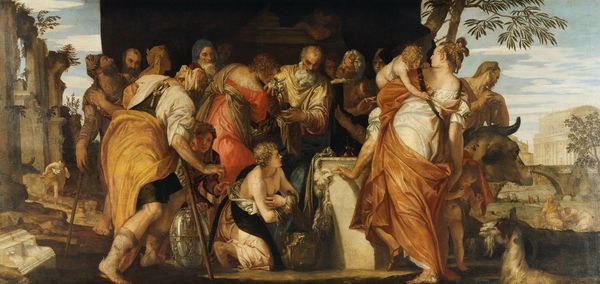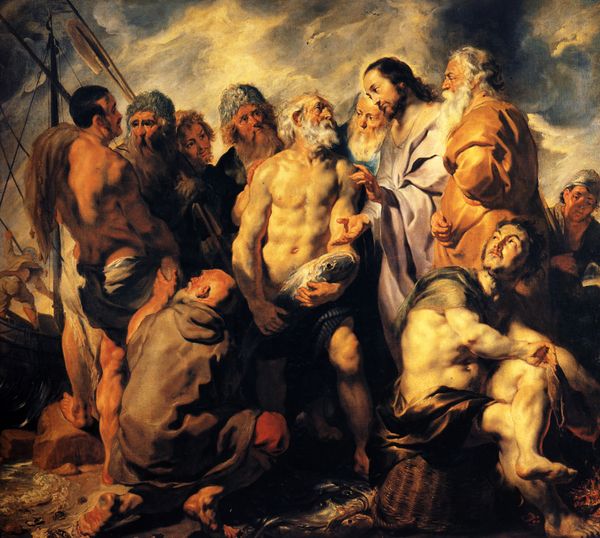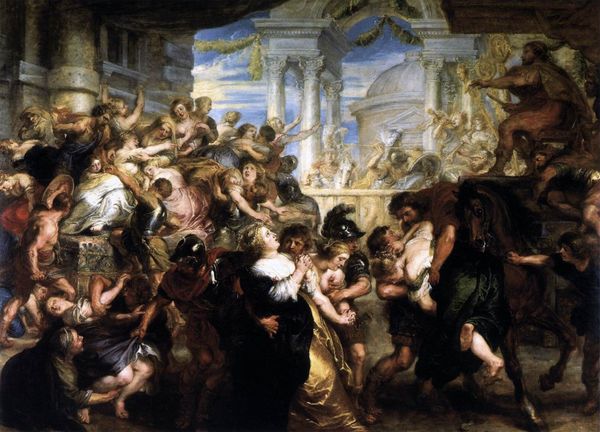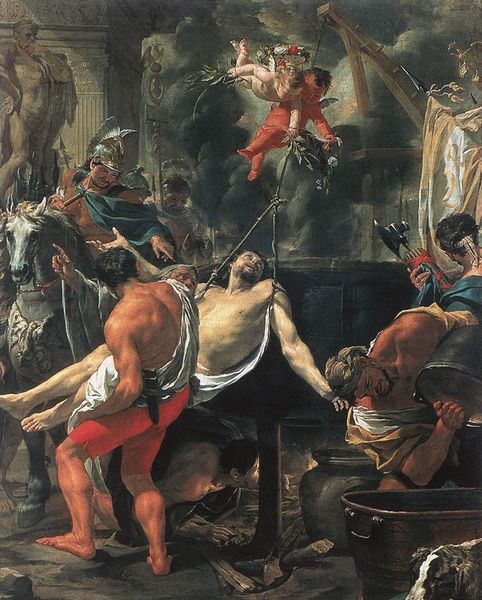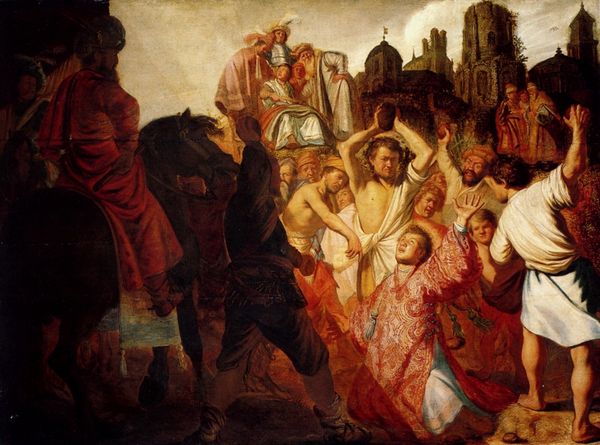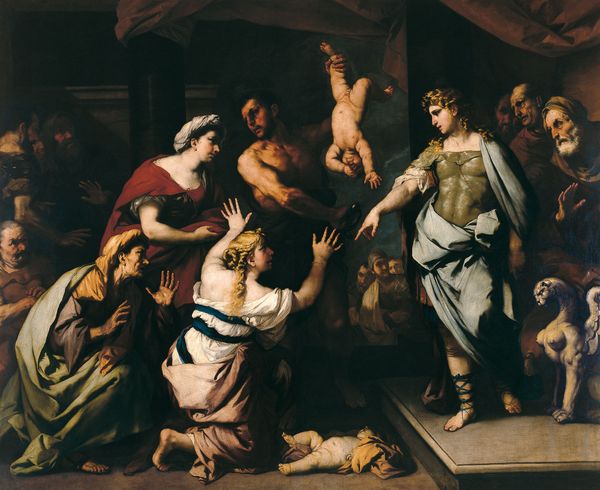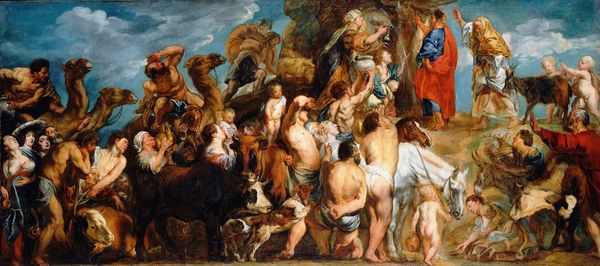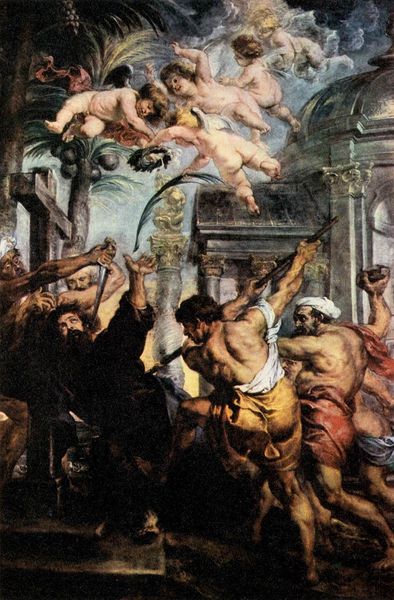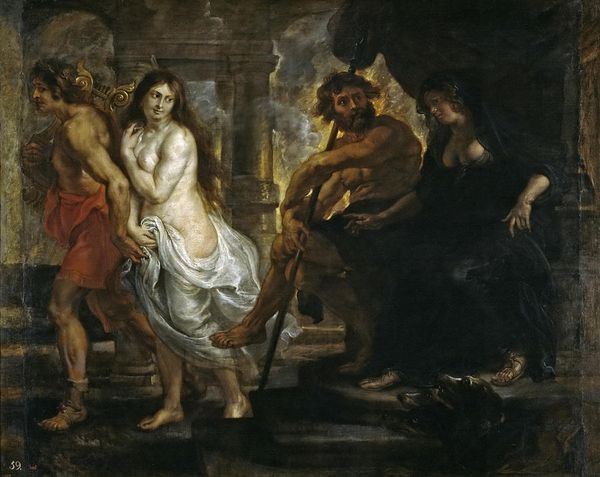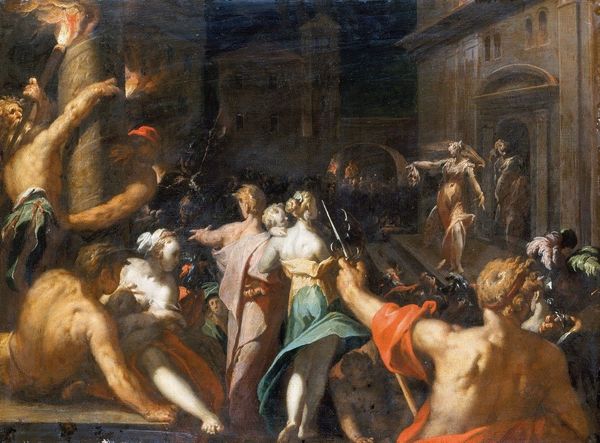
painting, oil-paint
#
narrative-art
#
baroque
#
painting
#
oil-paint
#
figuration
#
oil painting
#
group-portraits
#
christianity
#
history-painting
Dimensions: 149 x 233 cm
Copyright: Public domain
Editor: Here we have Jacob Jordaens's "The Apostles, St. Paul and St. Barnabas at Lystra," an oil painting from 1616. The figures seem caught in a moment of intense activity, and there's a tension between reverence and disbelief. How do you interpret this work? Curator: This piece, bursting with Baroque dynamism, confronts us with the complexities of faith and cultural exchange. Look at how Jordaens depicts the scene: the Lystrans, ready to worship Paul and Barnabas as gods, versus the apostles' horrified reaction. This highlights the ever-present danger of the powerful being co-opted and misinterpreted by the masses. Editor: So, it's a commentary on the reception of power? Curator: Exactly. It questions the seductive allure of authority and challenges the uncritical acceptance of narratives. Notice the sacrificial animal – a symbol of devotion but also potential oppression. Consider the implications for today. Who are the figures we elevate, and what systems of belief do we blindly perpetuate, perhaps to our detriment and to the detriment of marginalized groups? Editor: That's a powerful reading. I hadn’t considered the social implications in such a direct way, but I see it now, especially within the historical context. Curator: Jordaens prompts us to examine the structures that uphold power. Is that elevation serving a community or a select few? Whose voices are amplified and, more critically, whose are silenced? This painting becomes a mirror reflecting our own cultural biases and the dangers of unexamined faith. It is the task of each generation to analyze whether societal reverence perpetuates injustice. Editor: I see this painting very differently now. It’s not just a religious scene, but a call for critical thinking. Curator: Precisely! Art like this encourages us to confront the uneasy truths about the societies we inhabit and the idols we create, so that we can build more equitable structures moving forward.
Comments
No comments
Be the first to comment and join the conversation on the ultimate creative platform.
